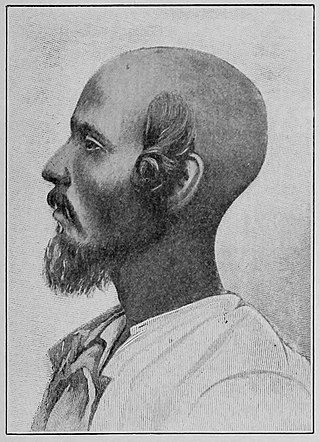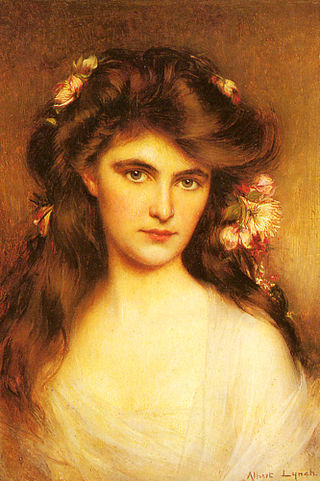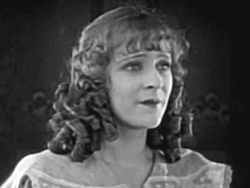
A hairstyle, hairdo, haircut or coiffure refers to the styling of hair, usually on the human head but sometimes on the face or body. The fashioning of hair can be considered an aspect of personal grooming, fashion, and cosmetics, although practical, cultural, and popular considerations also influence some hairstyles.
A corkscrew is a tool for drawing stopping corks from bottles.

The afro is a hair style created by combing out natural growth of afro-textured hair, or specifically styled with chemical curling products by individuals with naturally curly or straight hair. The hairstyle can be created by combing the hair away from the scalp, dispersing a distinctive curl pattern, and forming the hair into a rounded shape, much like a cloud or puff ball.

A hair iron or hair tong is a tool used to change the arrangement of the hair using heat. There are three general kinds: curling irons, used to make the hair curly, straightening irons, commonly called straighteners or flat irons, used to straighten the hair, and crimping irons, used to create crimps of the desired size in the hair.

A permanent wave, commonly called a perm or permanent, is a hairstyle consisting of waves or curls set into the hair. The curls may last a number of months, hence the name.

Sidelocks in English, or pe'ot in Hebrew, anglicized as payot or payes, is the Hebrew term for sidelocks or sideburns. Payot are worn by some men and boys in the Orthodox Jewish community based on an interpretation of the Tanakh's injunction against shaving the "sides" of one's head. Literally, pe'a means "corner, side, edge". There are different styles of payot among Haredi or Hasidic, Yemenite, and Chardal Jews. Yemenite Jews call their sidelocks simanim, literally, "signs", because their long-curled sidelocks served as a distinguishing feature in the Yemenite society.

A bouffant is a type of puffy, rounded hairstyle characterized by hair raised high on the head and usually covering the ears or hanging down on the sides.

The conk was a hairstyle popular among African-American men from the 1920s up to the early-to-mid 1960s. This hairstyle called for a man with naturally "kinky" hair to have it chemically straightened using a relaxer called congolene, an initially homemade hair straightener gel made from the extremely corrosive chemical lye which was often mixed with eggs and potatoes. The applier had to wear gloves and the solution timed just right on the applicant's head and then thoroughly rinsed out with cold water to avoid chemical burns. The desired outcome was for the newly straightened hair to be easily styled in the popular "conk" style of that era.

The pouf or pouffe also "toque" is a hairstyle and a hairstyling support deriving from 18th-century France. It was made popular by the Queen of France, Marie Antoinette (1755–1793), when she wore it in June 1775 at the coronation of her husband Louis XVI, triggering a wave of French noblewomen to wear their hair in the same manner. The hairstyle would become popular across Europe in the 1770s.

A lock of hair is a piece or pieces of human hair that are usually bunched or tied together in some way. A lock of hair can be on a person's head, or have been cut from the head. When attached to the head, a lock of hair generally refers to a tress, curl, or ringlet of hair. When cut from the head, a lock of hair may be kept for its symbolic value.

Hair straightening is a hair styling technique used since the 1890s involving the flattening and straightening of hair in order to give it a smooth, streamlined, and sleek appearance. It became very popular during the 1950s among black males and females of all races. It is accomplished using a hair iron or hot comb, chemical relaxers, Japanese hair straightening, Brazilian hair straightening, or roller set/blowdryer styling. In addition, some shampoos, conditioners, and hair gels can help to make hair temporarily straight.

A fontange, or frelange, is a high headdress popular during the turn of the late 17th and early 18th centuries in Europe.

Waves are a hairstyle for curly hair in which the curls are brushed and/or combed and flattened out, creating a ripple-like pattern.

A hair roller or hair curler is a small tube that is rolled into a person's hair in order to curl it, or to straighten curly hair, making a new hairstyle.
Hairstyling tools may include hair irons, hair dryers, hairbrushes, hair rollers, diffusers and various types of scissors.

Hairstyle fashion in Rome was ever changing, and particularly in the Roman Imperial Period there were a number of different ways to style hair. As with clothes, there were several hairstyles that were limited to certain people in ancient society. Styles are so distinctive they allow scholars today to create a chronology of Roman portraiture and art; we are able to date pictures of the empresses on coins or identify busts depending on their hairstyles.

The Jheri curl is a permanent wave hairstyle that was popular among African Americans during the 1980s and early 1990s. Invented by the hairdresser Jheri Redding, the Jheri curl gives the wearer a glossy, loosely curled look. It was touted as a "wash and wear" style that was easier to care for than the other popular chemical treatment of the day, the relaxer.

Victory rolls are a women's hairstyle that was popular from 1940 to 1945, with a recent rise during the 21st century, characterized by voluminous curls of hair that are either on top of the head or frame the face. Victory rolls are closely associated with the pin-up look and are achieved using various backcombing, rolling, pinning, and curling techniques.
The natural hair movement is a movement which aims to encourage people of African descent to embrace their natural, afro-textured hair; especially in the workplace. It originated in the United States during the 1960s, and resurged in popularity in the 2000s.

The Creating a Respectful and Open World for Natural Hair Act of 2022 was a bill in the United States Congress intended to prohibit discrimination based on an individual's hair texture or hairstyle by classifying such discrimination illegal under federal law. It applied to federally assisted programs, housing programs, public accommodations, and employment. The act was introduced in the House of Representatives by Congresswoman Bonnie Watson Coleman (D-NJ) on March 19, 2021. Senator Cory Booker (D-NJ) introduced a companion bill in the Senate on March 22, 2021. The CROWN Act of 2022 marked the second time the legislation was introduced in Congress.

















